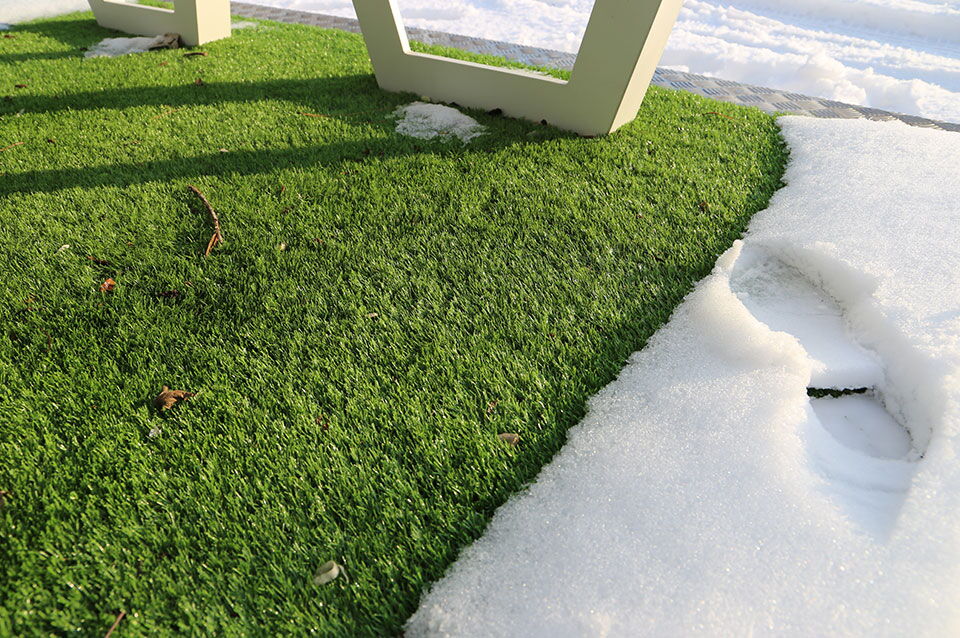How to care for your artificial lawn during the winter season
One of the main reasons to choose artificial grass is its year-round great look and its resilience towards any weather condition. Changing temperatures don’t have any effect on artificial grass and a lack or a surplus of water will not damage it. Although artificial grass requires very little maintenance, there are some tips and tricks you can keep in mind during the fast approaching winter season.

What to do and when?
1. When it freezes
Frost does not damage the fibers of artificial grass. Although the carpet might sound crunchy when you walk on it, don’t worry, it’s not the grass that is breaking. Just relax and let it melt on its own. Be advised not to use any anti-freeze products on your artificial grass, since chemicals might have harmful effects. Salt can be used occasionally, but be aware that it will sink to the bottom of your artificial grass, thus reducing the draining effects of your artificial lawn. We recommend you to avoid this as well.
2. When it snows
Just enjoy the snow on your artificial grass lawn! Snow does not damage your artificial lawn, but just gives it a temporarily white look. Don’t like the new look? Use a plastic snow shovel to gently remove the snow. Just be careful not to pull out any grass fibers. If you don’t like the extra work, you can just let the snow melt naturally.
When walked upon, snow can get compacted and form a layer in your artificial grass. Be careful, because this is really slippery to walk on and again, the drainage capacity of your lawn might deteriorate. In case this happens, we recommend you to remove the layer by hand to avoid damage.
3. When it rains a lot
If you had your artificial grass installed by a Turfgrass certified installer, your installation is properly done and therefore you have nothing to worry about. Turfgrass artificial grass has a drainage capacity of 60 liters per minute and m². This will ensure that your artificial lawn does not get flooded or becomes unstable. If you want to make sure the drainage capacity of the grass remains the same, remove as much debris as you can to avoid that the drainages holes get blocked.
4. When there’s a lot of wind
Heavy wind can cause the surrounding trees to drop their last leaves and they might end up on your artificial lawn. We recommend you to give your lawn a sweep once in a while to avoid the leaves piling up. When these leaves decompose, they might create kind of a mess on your grass.
Actually, when you think about these tips and tricks, they really don’t take up much time or effort. Which means you can just keep on enjoying your artificial lawn like before, with minimum effort. More so, a garden with artificial grass will keep looking better and tidier in winter, since natural grass gardens tend to turn into mud pools in case of heavy rain or snow that melts.